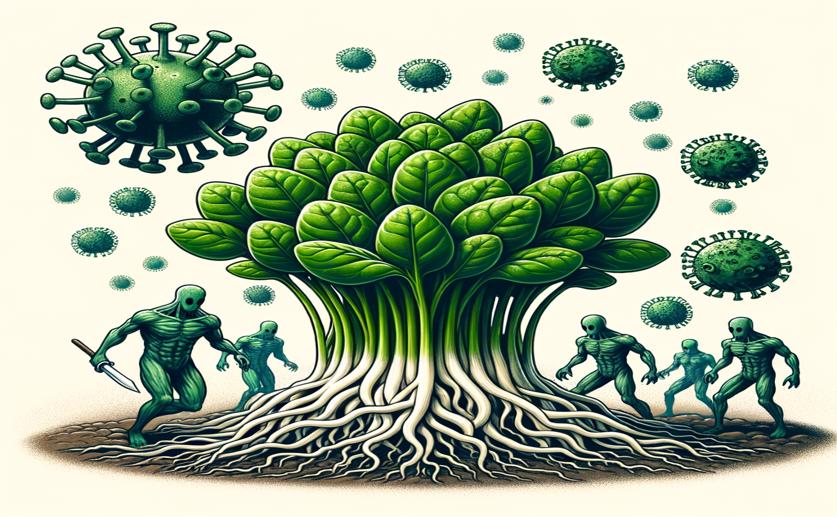
Using a Virus to Keep Baby Spinach Safe from Harmful Bacteria
Jenn Hoskins
16th August, 2024

Image Source: Natural Science News, 2024
Key Findings
- Researchers at Seoul Women's University isolated a virus called phage SSP49 from sewage that specifically targets and kills Staphylococcus aureus
- Phage SSP49 effectively inhibited the growth of S. aureus on baby spinach leaves, showing potential as a natural biocontrol agent in fresh produce
- The phage is safe for food use as its genome lacks genes for bacterial toxicity, antibiotic resistance, or lysogen formation
AgricultureBiotechPlant Science
References
Main Study
1) Isolation, characterization, and application of a lytic bacteriophage SSP49 to control Staphylococcus aureus contamination on baby spinach leaves.
Published 15th August, 2024
https://doi.org/10.1016/j.foodres.2024.114848
Related Studies
2) Teichoic acids are temporal and spatial regulators of peptidoglycan cross-linking in Staphylococcus aureus.
3) PCR-based procedures for detection and quantification of Staphylococcus aureus and their application in food.
Journal: Journal of applied microbiology, Issue: Vol 100, Issue 2, Feb 2006
4) Unlocking the next generation of phage therapy: the key is in the receptors.



 6th August, 2024 | Greg Howard
6th August, 2024 | Greg Howard